Motivation is at the heart of everything people do (and don’t do). This truth begs a question: As a leader are you focused on honing your motivational leadership skills? Or, like so many managers, are you still held accountable for leadership competencies rooted in outdated command-and-control, leader-centric, and carrot-and-stick management theories at odds with what we know about human motivation? Are you pushed to drive for results? Find people’s motivational hot buttons? Incentivize behavior with money, rewards, praising, tokens and badges?
A far more effective approach to workplace motivation exists, supported by empirical motivation science. So, why aren’t organizations, leaders and HR professionals taking notice? One answer: We need to present a business case so convincing that leaders are willing to let go of traditional approaches to motivation designed to get results and replace them with leadership capacities that not only get results but simultaneously promote people’s thriving so the positive outcomes are sustainable — not to mention a more ethical and enlightened way to lead.
As a start, let’s consider the business case for rethinking motivational leadership through three vexing business issues: improving performance and outcomes, retention (while avoiding the quiet quitting phenomenon) and employee engagement.
Optimal motivation improves performance and outcomes
Not all motivation is created equal. The type of motivation that results from feeling overwhelmed with circumstances, pressured to perform, being incentivized to adapt behavior, feeling imposed through fear or hoping to avoid the guilt of not meeting expectations is considered suboptimal. The three psychological needs people require for optimal performance and thriving are thwarted by suboptimal motivation, so even short-term results suffer the opportunity loss of mental and physical health, sustainability, creativity and innovative thought.
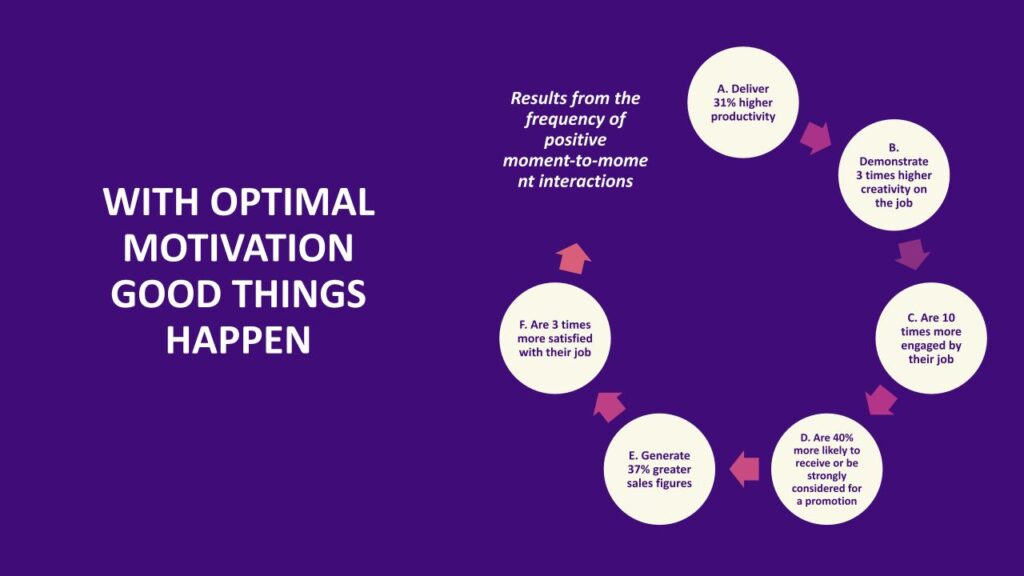 On the other hand, optimal motivation results from people taking action based on alignment with meaningful values, a sense of purpose and self-identity or the inherent joy experienced by pursuing their goal — fulfilling people’s psychological needs for choice, connection and competence.
On the other hand, optimal motivation results from people taking action based on alignment with meaningful values, a sense of purpose and self-identity or the inherent joy experienced by pursuing their goal — fulfilling people’s psychological needs for choice, connection and competence.
Empirical research proves that goals pursued with optimal motivation are more likely to be achieved. If goals are achieved through suboptimal motivation, people’s energy is easily depleted and they suffer the consequences. But the vitality generated through optimal motivation is sustainable and healthy. A compilation of thousands of studies of employees who experience the characteristics of optimal motivation shows consistently higher and more sustainable performance compared with their sub-optimally motivated coworkers.
Optimal motivation is essential to improve retention (and avoid “Quiet Quitting”)
The most cited motivation behind quitting and moving jobs according to a recent global study by McKinsey is the need for flexibility, or as the report states: “Anything for autonomy.”
Delve further into the data explaining the motivation behind people quitting their jobs, and you find the need to escape “toxic managers” and “a feeling of not being appreciated.” The Great Resigners “crave” a company culture focused on employee health and well-being that emphasizes meaning and purpose. These job seekers aren’t lazy and looking for a handout. They want career development and opportunities for advancement.
These findings underscore what motivation science proves: When people are “unhappy” at work, they yearn for something. But what they don’t realize is that the “something” at the core of their longing is their unmet psychological need for choice (autonomy), connection (meaningful relationships and work) and competence (growth, learning, opportunities, resources).
When people don’t fulfill these three psychological needs for choice, connection and competence, they unconsciously seek compensation — something to fill the void they feel but don’t understand. Typically, they pursue compensation through more money, benefits and perks. The scientific term for seeking to compensate for missing psychological needs is compensatory need satisfaction. And it doesn’t work. Misunderstanding the nature of happiness — and the motivation behind it — pushes people to join the quiet quitting movement. (You can read more about how to avoid suffering resignations and the regret of quiet quitting in this SmartBrief article.)
Chris Wollerman, cofounder of the software company, InnovaSystems, and I recently delivered a webinar on the link between motivation and retention. Chris believes in creating a workplace where optimal motivation is the norm. Innova managers have learned how to master motivation with others; individuals have learned the skill of mastering their own motivation. The company even built a motivation wizard into its proprietary Inspire Software for people to identify their motivational outlook on goals and discuss it during one-on-one meetings with their manager. The result? As the average retention rate for US companies dropped dramatically during the pandemic years, InnovaSystems enjoyed low attrition — and a retention rate over 25% higher than the national average.
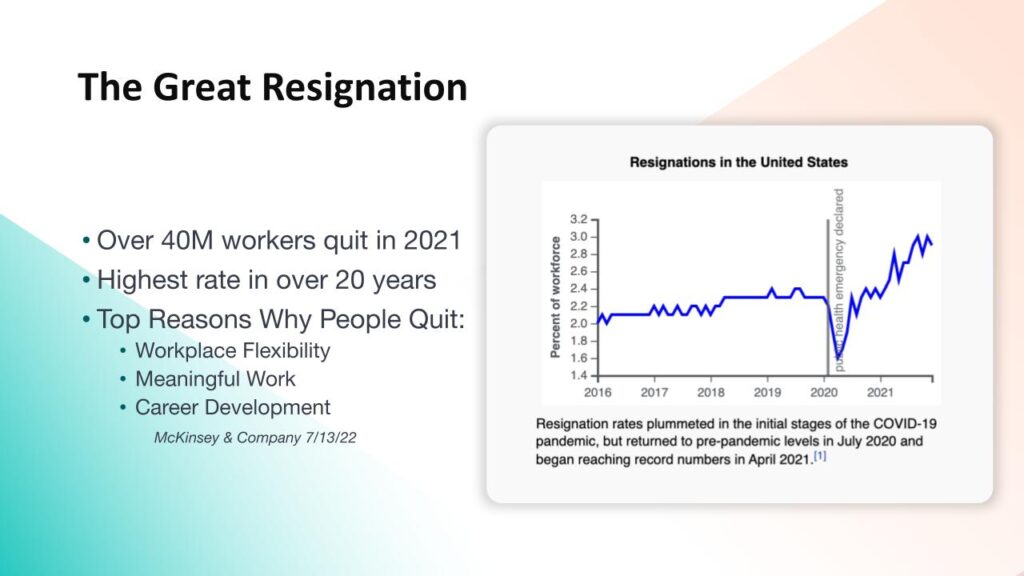
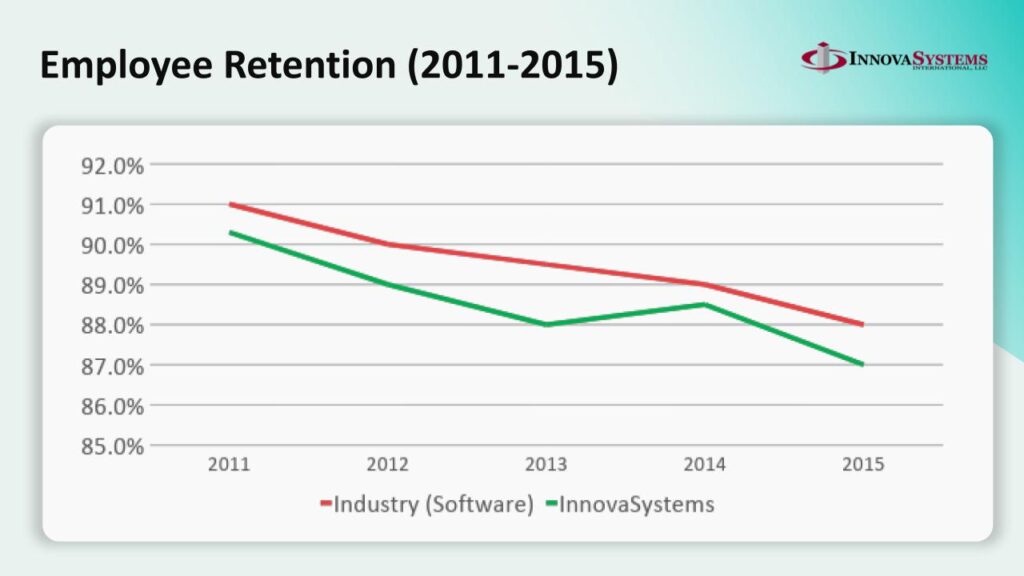
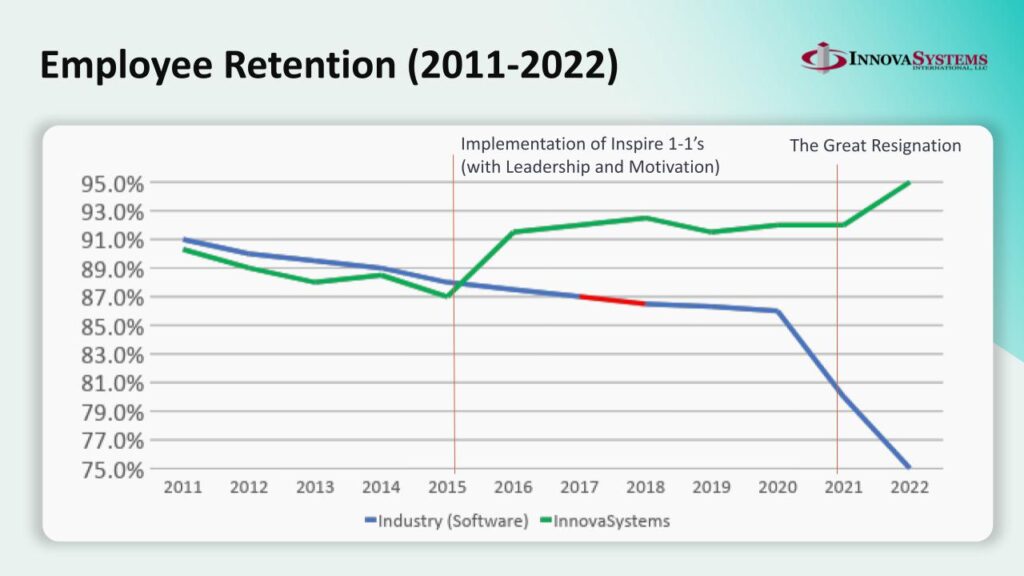 Optimal motivation fuels employee work passion—the upper end of engagement
Optimal motivation fuels employee work passion—the upper end of engagement
Where does engagement come from? In my work with organizations of different sizes and representing a myriad of industries who conduct employee engagement surveys, I find a commonality. Executives are convinced that improving employee engagement has bottom-line implications. But, they are collectively spending millions of dollars to measure engagement in the hopes of improving it without understanding its root cause. How can you fix an engagement problem if you don’t understand how individuals become disengaged or engaged in the first place?
I have written extensively about the cutting-edge research on employee work passion, led by Dr. Drea Zigarmi and his team demonstrating how individuals are constantly appraising the workplace by consciously and subconsciously asking, “Do I feel safe or threatened? Am I energized or enervated? Do I feel negative or positive?” This appraisal leaves them experiencing positive well-being or negative ill-being. Whatever they conclude determines their intentions — those intentions become the most significant predictors of their behavior.
A positive appraisal results in a positive sense of wellbeing that leads to five positive intentions (the use of discretionary effort on behalf of the organization, performance at higher than expected standards, endorsement of the organization and its leaders, an intention to stay and use of organizational citizenship behaviors). These intentions lead to behaviors that result in employee work passion — the upper end of employee engagement. A negative appraisal leads to disengagement.
Zigarmi’s research links motivation and employee work passion. In the chart below, notice that when people are optimally motivated, they tend to experience a positive appraisal that leads to employee work passion. When they experience suboptimal motivation, they are more likely to go down the path to disengagement.
In the chart, the “plus” symbols reflect a significant positive correlation between optimal motivation and the five intentions that lead to employee work passion, the “no” signs indicate no significant correlation between suboptimal motivation and the five intentions and the “minus” signs signify a significant negative correlation between the disinterested motivational outlook and the five intentions.
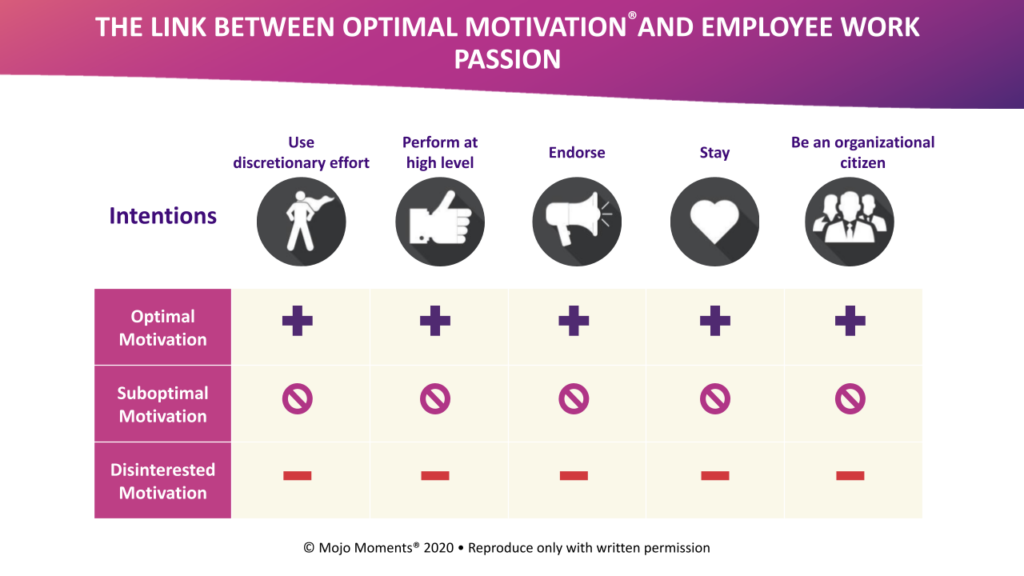
As Alvar Pierra, senior manager at Beckman Coulter Dx Europe, shares in an interview I conducted, “Optimal motivation fuels employee work passion; suboptimal motivation fuels disengagement. I support the assertion that managers play an essential role in people’s appraisal process. By rethinking their approach to motivation, managers can encourage choice, deepen connection and build competence so people are more likely to experience the day-to-day optimal motivation that leads to engagement and employee work passion.”
The business case is clear: The connection between vexing business issues and fulfilling people’s psychological needs is real. The time for leaders with the capacity to master motivation with others by encouraging choice, deepening connection and building competence has a positive effect on an organization’s success measures. More simply stated: focusing on fulfilling people’s psychological needs is a better way to lead. When you master motivational leadership you ensure that people flourish as they help you deliver the business results you’re being held accountable for achieving.
Susan Fowler, CEO of Mojo Moments, is the bestselling author of “Why Motivating People Doesn’t Work … And What Does,” being released in an updated second edition in May 2023. The companion book, “Master Your Motivation: Three Scientific Truths for Achieving Your Goals,” presents an evolutionary idea: motivation is a skill. Providing real-world examples and empirical evidence, Fowler teaches individuals how to achieve their goals and flourish as they succeed. She is also the author of bylined articles, peer-reviewed research, and eight books, including the best-selling “Self Leadership and The One Minute Manager” with Ken Blanchard. Tens of thousands of people worldwide have learned from her ideas through training programs. For more information, visit SusanFowler.com and MojoMoments.com.
If you enjoyed this article, sign up for SmartBrief’s free e-mails on leadership, career development, and HR, among SmartBrief’s more than 200 industry-focused newsletters
